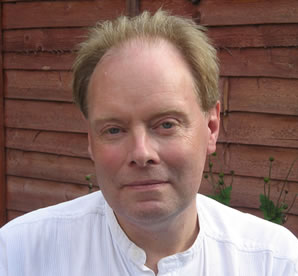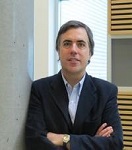Session & Tracks
Track 01: Ceramic Processing Techniques
Ceramic processing techniques have evolved significantly over the years, combining traditional methods such as pressing and sintering with cutting-edge approaches like 3D printing and sol-gel processes. Traditional techniques involve the transformation of raw materials into ceramic products through controlled heating and shaping, enabling the creation of high-performance ceramics with excellent mechanical properties. Innovations such as advanced pressing techniques allow for improved density, finer grain size control, and precise shape fabrication. In parallel, 3D printing technologies have revolutionized ceramic manufacturing by enabling complex geometries and rapid prototyping, reducing material waste and production costs. The integration of sol-gel processes allows for the creation of dense, uniform ceramic materials with excellent surface finishes. These advancements contribute to enhanced mechanical properties, superior wear resistance, and sustainability, making ceramic processing a dynamic field that continues to meet the demands of modern industries.
Track 02: Composite Material Design and Development
Composite materials have transformed industries by combining different constituents to achieve superior performance. This track focuses on designing and developing composites tailored for specific industrial needs, including lightweight solutions, bio-inspired composites, and hybrid materials. The design process involves selecting appropriate matrices and incorporating reinforcements such as carbon fibers, glass fibers, or ceramic nanoparticles to optimize strength, durability, and other critical properties. Advances in computational modeling and simulation are enabling precise predictions of material behavior, enhancing the efficiency of composite development. Composite materials are used across aerospace, automotive, and construction industries, offering benefits like improved fuel efficiency, crash resistance, and structural durability. Innovations in hybrid and bio-inspired composites are expanding applications to areas such as renewable energy and sustainable infrastructure. However, challenges such as uniform reinforcement dispersion, cost management, and maintaining structural integrity under extreme conditions persist, pushing researchers to continually innovate.
Track 03: Nanostructured Ceramics
Nanostructured ceramics have opened new avenues in material science, enhancing mechanical strength, thermal stability, and electrical conductivity at the nanoscale. These materials are synthesized through advanced techniques such as chemical vapor deposition (CVD), sol-gel processes, and physical vapor deposition (PVD), allowing for precise control over nanometric features. Nanostructured ceramics excel in applications ranging from biomedical devices to high-performance electronics, providing superior properties for self-healing capabilities, wear resistance, and energy storage systems. Advances in characterization tools like transmission electron microscopy (TEM) and atomic force microscopy (AFM) facilitate the study of grain boundaries, phase distributions, and defect structures. Research breakthroughs include the development of multifunctional nanostructured ceramics that combine structural support with advanced electronic functionalities. Despite their potential, challenges remain in scaling production, maintaining uniform nanostructure distribution, and ensuring long-term stability under various environmental conditions.
Track 04: Functional Ceramics
Functional ceramics are engineered to perform specific roles, such as conducting electricity, resisting high temperatures, or serving as active components in electronic devices. This track explores the latest developments in piezoelectric, ferroelectric, and magnetic ceramics, which are essential in applications like sensors, actuators, and transducers. These materials exhibit superior properties for applications demanding high precision and durability. Functional ceramic coatings enhance wear resistance and thermal protection in industrial applications, making them indispensable in sectors such as aerospace, automotive, and electronics. The underlying mechanisms enabling these materials—such as domain interactions in ferroelectric ceramics—are explored, offering insights into their performance in demanding environments. Advancements in thin-film technology are further pushing the boundaries of functional ceramics, opening doors to miniaturized, high-performance devices.
Track 05: Advanced Characterization Techniques
Advanced characterization techniques are essential for understanding the intricate microstructures and properties of ceramics and composites. Tools like electron microscopy, X-ray diffraction, atomic force microscopy, and spectroscopy provide deep insights into grain boundaries, phase compositions, and defect structures, facilitating the optimization of material properties. The integration of artificial intelligence and machine learning into data analysis is revolutionizing the interpretation of complex datasets, enabling more accurate predictions and faster innovation. These advanced techniques are crucial for accelerating the development of next-generation ceramics and composites, offering a platform for tailoring material properties to meet specific industrial needs. By enhancing our understanding of material behavior, these techniques drive innovation across industries ranging from energy storage to healthcare.
Track 06: Ceramic Matrix Composites (CMCs)
Ceramic Matrix Composites (CMCs) are advanced materials designed to offer exceptional performance under extreme conditions, combining the high-temperature resistance and durability of ceramics with the toughness and flexibility of composite materials. These composites utilize innovative fiber reinforcements, such as silicon carbide (SiC) and carbon, to enhance mechanical properties and reduce brittleness. Interface engineering further optimizes the bonding between the ceramic matrix and reinforcing fibers, ensuring superior strength and resistance to environmental factors like oxidation. Advanced coatings and barrier technologies are employed to protect CMCs from high-temperature oxidation, extending their operational lifespan in harsh environments. CMCs are increasingly used in aerospace, automotive, and energy sectors for applications such as turbine blades, engine components, and structural components for space missions. Ongoing research focuses on improving the performance of CMCs through advanced manufacturing techniques, smart material integration, and computational design methods to meet the evolving demands of next-generation technologies.
Track 07: Bioceramics and Biomedical Applications
Bioceramics have significantly transformed the medical field by providing innovative, biocompatible solutions for various applications, including implants, prosthetics, and tissue engineering. These materials, such as hydroxyapatite, alumina, and zirconia, are carefully designed to mimic the properties of natural bone and soft tissues, ensuring seamless integration with living tissues. Bioceramics offer outstanding mechanical strength, bioactivity, and durability, enabling them to support cell growth, promote tissue regeneration, and enhance long-term functionality in biomedical devices. From enhancing dental implants and developing advanced bone graft substitutes to enabling controlled drug delivery systems, bioceramics are shaping the future of healthcare with materials that improve patient outcomes and reduce the risk of complications. Continuous advancements in bioceramic research focus on optimizing their performance in challenging environments, including reducing wear, improving wear resistance, and ensuring compatibility with various biomedical applications. Additionally, innovations in bioceramic manufacturing techniques, such as additive manufacturing and nanotechnology, are pushing the boundaries of what these materials can achieve, paving the way for more personalized and sustainable medical solutions.
Track 08: Energy and Environmental Applications
Ceramics and composites play a crucial role in the development of sustainable energy solutions and the mitigation of environmental challenges. This track focuses on innovative materials designed for energy storage, conversion, and environmental remediation, including solid oxide fuel cells, advanced batteries, and catalytic converters. These materials are engineered to enhance efficiency, durability, and cost-effectiveness in clean energy technologies, making them integral to sustainable practices. The application of advanced ceramics in carbon capture and sequestration is particularly significant, offering solutions to reduce greenhouse gas emissions and support environmental sustainability. As industries strive to meet global environmental targets, these materials are essential for creating eco-friendly alternatives that minimize environmental impact while driving innovation in renewable energy and resource management. Continuous advancements in ceramics and composites are pushing the boundaries of what is possible, contributing to a more sustainable future.
Track 09: High-Performance Structural Materials
Ceramics and composites are pivotal in advancing sustainable energy solutions and addressing environmental challenges. This highlights the development and application of innovative materials tailored for energy storage, conversion, and environmental remediation. Key examples include solid oxide fuel cells, advanced batteries, and catalytic converters, designed to improve efficiency, durability, and cost-effectiveness in clean energy technologies. Furthermore, the use of advanced ceramics in carbon capture and sequestration plays a vital role in reducing greenhouse gas emissions, supporting efforts toward a more sustainable future. As industries aim to meet global environmental goals, these materials provide eco-friendly alternatives that minimize environmental impact while fostering innovation in renewable energy and sustainable resource management. Continuous research and development in ceramics and composites are expanding their capabilities, driving progress toward a more sustainable and environmentally responsible world.
Track 10: Electrical and Electronic Ceramics
Electrical and electronic ceramics play a vital role in the modern electronics industry, serving as key materials for capacitors, insulators, and semiconductors that enable miniaturization and improved performance. This track explores advancements in dielectric materials, piezoelectric components, and ceramic-based sensors, which are integral to cutting-edge communication systems, power electronics, and wearable technologies. As the demand for high-speed data transmission and reliable artificial intelligence (AI) hardware grows, ceramics are increasingly indispensable in driving technological innovation. Despite challenges in optimizing the integration and performance of ceramic materials, ongoing research continues to push boundaries, paving the way for the development of next-generation devices with enhanced capabilities and functionality. These innovations are shaping the future of electronics, offering solutions that meet the evolving needs of industries reliant on advanced technological solutions.
Track 11: Additive Manufacturing of Ceramics and Composites
Additive manufacturing has revolutionized the design and production of ceramics and composites, offering unprecedented flexibility and customization. it highlights advancements in 3D printing technologies such as binder jetting, stereolithography, and direct ink writing for ceramics and composites. These techniques allow for the creation of complex structures with tailored material properties, reducing porosity and enhancing scalability for industrial applications. 3D-printed ceramics are increasingly being adopted in sectors such as aerospace, healthcare, and automotive, providing innovative solutions for rapid prototyping and mass customization. As the field continues to evolve, emerging trends like multi-material printing and the integration of advanced digital design tools are expanding the capabilities of additive manufacturing, paving the way for new possibilities in material innovation and application. These advancements are driving the development of highly specialized, sustainable, and efficient solutions for a wide range of industries.
Track 12: Ceramic Coatings and Thin Films
Ceramic coatings and thin films play a crucial role in enhancing functionality and protection across a wide range of industries, from aerospace and automotive to medical devices. It will explores advancements in deposition techniques such as plasma spraying, chemical vapor deposition, and atomic layer deposition, which enable the creation of coatings with exceptional wear resistance, thermal stability, and corrosion protection. These materials are critical in industries that demand durability under extreme conditions, including turbines, pipelines, and advanced electronics. Additionally, the potential for ceramic thin films in flexible electronics and nanotechnology expands their versatility, offering new opportunities for innovation in next-generation technologies. As these techniques continue to evolve, they provide ground breaking solutions that address the growing need for enhanced performance and sustainability in advanced materials.
Track 13: Wearable and Flexible Ceramics
The demand for wearable technology and flexible electronics has fueled the development of ceramics with exceptional mechanical and functional properties. it focuses on breakthroughs in flexible ceramic materials that facilitate integration into next-generation devices, including smart textiles, health monitoring systems, and flexible energy storage solutions. These advanced ceramics offer remarkable performance under mechanical stress, making them ideal for applications in wearable technology, healthcare, and smart packaging. Despite these advancements, challenges such as manufacturing scalability and maintaining durability in dynamic usage continue to drive research and innovation. Ongoing efforts aim to overcome these hurdles, paving the way for more versatile and reliable flexible ceramics in a variety of industries.
Track 14: Lightweight Composites for Aerospace and Automotive
Lightweight composites are increasingly vital for enhancing fuel efficiency and performance in aerospace and automotive industries. This emphasizes the development of advanced lightweight materials that provide high strength-to-weight ratios, thermal stability, and superior impact resistance. By integrating reinforcements such as carbon fibers and ceramic nanoparticles, these composites achieve high-performance capabilities essential for aircraft, electric vehicles, and other demanding applications. Innovations in manufacturing processes are playing a crucial role in reducing costs and improving the scalability of lightweight composites, enabling their adoption across various industries and paving the way for next-generation mobility solutions. These advancements are fostering the creation of more sustainable and efficient materials for a wide range of applications.
Track 15: Glass Ceramics and Applications
Glass ceramics seamlessly blend the properties of glass and crystalline phases, offering versatile solutions across optics, electronics, and construction. This track delves into advancements in processing techniques and the development of glass ceramics with controlled crystallization to achieve properties like high strength, thermal stability, and transparency. The integration of glass ceramics into photonics, additive manufacturing, and nanotechnology is driving rapid innovation, providing new possibilities for cutting-edge applications. From advanced optical components and electronic substrates to high-performance structural elements, glass ceramics are at the forefront of transforming various high-tech industries, pushing the boundaries of what is possible in material science and engineering.
Track 16: Recycling and Sustainability in Ceramics
Sustainability has become a pivotal focus in the ceramics industry, inspiring the development of innovative recycling methods and eco-friendly manufacturing practices. it explores the reuse of industrial by-products, biodegradable ceramics, and the adoption of circular economy principles, all aimed at minimizing waste and reducing environmental impact. Life cycle assessment tools are integral in assessing the carbon footprint of ceramic production, enabling the implementation of more sustainable practices. By showcasing successful examples and recent research, this track encourages advancements that push toward reducing the environmental impact of ceramic materials, fostering a more sustainable future in material development and production.
Track 17: Ceramic Armour and Defence Applications
Ceramic materials play a crucial role in defence applications, providing lightweight, durable protection against ballistic threats, extreme temperatures, and corrosive environments. This delves into the latest advancements in ceramic armour design, focusing on the development of multi-layered structures, advanced ceramic matrices, and cutting-edge fabrication techniques to enhance both protective capabilities and performance. By incorporating innovations such as nano-structured ceramics and composite reinforcements, these materials deliver unparalleled protection while ensuring the mobility, agility, and comfort of military personnel. Ongoing research continues to refine armour-grade ceramics, addressing critical challenges such as impact resistance, scalability, durability, and integration with other protective materials to meet the evolving demands of modern defence operations. These advancements ensure that ceramic armour remains at the forefront of providing reliable and efficient protection in the most demanding and hostile environments.
Track 18: Environmental Sensors Using Ceramics
Environmental sensing plays a pivotal role in monitoring air quality, water contamination, and hazardous waste management, addressing critical environmental challenges in both urban and remote settings. This track emphasizes the development of advanced ceramic-based sensors, which offer exceptional sensitivity, robustness, and durability for long-term environmental monitoring. Utilizing techniques such as thick-film technology, microfabrication, and the integration of high-temperature sensing materials, these sensors are designed to withstand harsh conditions while delivering accurate and reliable data. Ceramic-based sensors provide real-time monitoring capabilities, enabling early detection of pollutants and contaminants, which is essential for proactive environmental management. Their ability to operate in extreme environments, coupled with their durability and longevity, makes them indispensable tools for monitoring and addressing complex environmental issues. Through continued innovation, these sensors contribute to the advancement of smarter, sustainable, and resilient environmental solutions.
Track 19: High-Temperature Superconductors
High-temperature superconductors (HTS) have emerged as a transformative force in the field of superconductivity, offering ground breaking possibilities in energy transmission, quantum computing, medical imaging, and other advanced technologies. This track explores the latest advancements in HTS materials, emphasizing their synthesis, structural optimization, and integration into practical, real-world applications. Innovations in superconducting ceramics have led to the development of highly efficient, fault-tolerant systems for power grids, allowing for reduced energy losses and improved reliability in high-demand environments. These materials are essential for the future of sustainable energy, offering a pathway to more efficient, eco-friendly power distribution. Despite challenges such as scalability and cost-effectiveness, continuous research is dedicated to overcoming these obstacles. Advances in material engineering and processing techniques are driving improvements in HTS performance, enabling their adoption in commercial applications and pushing the boundaries of what is possible in fields like quantum computing and advanced electronics. As the demand for low-power, high-efficiency solutions grows, HTS technologies are becoming an increasingly crucial component in the development of next-generation systems for diverse industries.
Track 20: Ceramic Recycling and Waste Reduction
The issue of ceramic waste and its environmental impact has spurred significant research into innovative recycling methods and sustainable practices. This track explores techniques such as mechanochemical processing, microwave-assisted recycling, and cutting-edge synthesis routes designed to optimize the reuse of ceramic waste materials. These advancements enable the recovery of valuable components from ceramics, reducing landfill waste and significantly lowering the environmental footprint associated with ceramic production. By fostering a more sustainable approach, industries are embracing eco-friendly solutions that meet the increasing demand for environmentally responsible materials in sectors such as construction, electronics, and healthcare. Furthermore, sustainable ceramic solutions are driving the transition toward a circular economy within the ceramics industry, where waste is minimized, and resources are efficiently utilized, promoting long-term ecological balance and resource conservation. Continued innovation in this area is essential for advancing sustainable development and ensuring that ceramic materials can be both resilient and environmentally conscious in their applications.




















